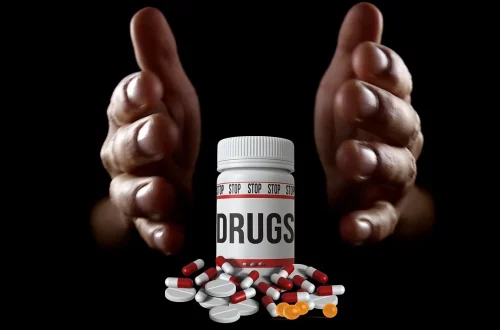
Understanding Measurements: How Much is 80 ml in Common Terms?
Understanding measurements can sometimes feel like a daunting task, especially when different units are involved. In our increasingly globalized world, where recipes, medication dosages, and various products can come in a multitude of measurement systems, it is essential to have a grasp of how these units translate into everyday terms. One such measurement that often raises eyebrows is milliliters. For many, understanding how 80 ml translates into more familiar units can simplify a variety of tasks, ranging from cooking and baking to administering medications or understanding product labels.
Milliliters are a unit of volume in the metric system. The metric system is widely used around the world and is designed to be straightforward and scalable, with units increasing or decreasing by powers of ten. This simplicity can sometimes mask the challenges associated with converting these measurements into terms that those accustomed to imperial units, like ounces and cups, can easily understand.
Ultimately, becoming comfortable with these conversions not only enhances your culinary skills but also ensures that you can make informed decisions about health and safety when it comes to medications or other liquid products. In this article, we will delve into the specifics of 80 ml, clarifying its meaning in various contexts and helping you navigate this common measurement with confidence.
Understanding Milliliters: The Basics
Milliliters (ml) are a sub-unit of liters, which are the standard unit of volume in the metric system. One milliliter is equivalent to one-thousandth of a liter, making it a relatively small volume measurement, perfect for liquids. The metric system, being decimal-based, allows for easy calculations and conversions. For example, 1 liter (1000 ml) can be easily divided into 10 dL (deciliters) or 100 cL (centiliters).
When it comes to practical applications, milliliters are commonly used in cooking, pharmaceuticals, and scientific measurements. In culinary contexts, precise measurements can be crucial to achieving the desired flavor and texture in recipes. For instance, many recipes will specify ingredients in milliliters, especially when using liquid components like water, oil, or vinegar.
Moreover, milliliters are the standard measurement for liquid medications. Understanding how to convert these measurements is essential for accurate dosing. For example, if a doctor prescribes a specific amount of medicine in milliliters, knowing how to convert that to teaspoons or tablespoons can be vital for proper administration.
Additionally, in scientific and laboratory settings, milliliters are frequently used for measuring liquids, whether it be in experiments or in creating solutions. The ability to accurately measure liquids in milliliters allows for precise control over reactions and processes, making it a fundamental skill in both academic and professional environments.
In summary, milliliters are an essential unit of measurement that plays a significant role in various sectors, including cooking, healthcare, and scientific research. Understanding how milliliters fit into the larger framework of volume measurements can enhance your ability to interact with these different areas effectively.
Common Conversions: How Much is 80 ml?
To truly grasp the significance of 80 ml, it helps to convert this measurement into more familiar terms. Understanding how 80 ml corresponds to other units can provide clarity, especially for those who primarily use the imperial system.
One of the most common conversions is from milliliters to ounces. There are approximately 29.57 ml in one fluid ounce. Therefore, to convert 80 ml to ounces, you can divide 80 by 29.57. This results in approximately 2.7 ounces. This conversion is particularly relevant for those who enjoy cooking or mixing beverages, as recipes often list ingredients in ounces.
Another common measurement is the cup. In cooking, a cup is a standard unit of measurement in many countries. One cup is equivalent to approximately 237 ml. When you compare 80 ml to a cup, it becomes clear that 80 ml is just over one-third of a cup (about 0.34 cups). This information can be particularly useful when adjusting recipes that require larger volumes of liquid.
In addition to these conversions, it’s also helpful to know how 80 ml translates into tablespoons and teaspoons, which are frequently used in cooking. There are approximately 14.79 ml in one tablespoon, meaning that 80 ml is roughly equivalent to 5.4 tablespoons. Similarly, with teaspoons, where one teaspoon equals approximately 4.93 ml, 80 ml would be about 16.3 teaspoons. These conversions can aid in precise measurements when following recipes that don’t specify milliliters.
Understanding these conversions not only makes cooking easier but also helps when dealing with liquid medications or other products measured in milliliters. By having a clear grasp of how 80 ml translates into various units, you can navigate these situations with greater confidence and accuracy.
Practical Applications: Using 80 ml in Daily Life
The measurement of 80 ml has various practical applications in everyday life that extend beyond the kitchen. Understanding how to utilize this measurement can enhance your daily routines, especially in cooking, health, and wellness.
In cooking, for instance, knowing that 80 ml is equivalent to approximately 2.7 ounces can help improve your culinary skills. Many recipes for sauces, dressings, or marinades call for precise measurements. By converting 80 ml into ounces, tablespoons, or teaspoons, you can ensure that you are adding the correct amount of ingredients, leading to better-tasting dishes.
In the realm of health and wellness, 80 ml is a common measurement for liquid medications. For those who need to take specific dosages, understanding how to measure out 80 ml accurately can be crucial. For example, if a liquid medication is prescribed in milliliters, knowing how to convert this into a more familiar measurement can help ensure that you are taking the correct dose. This is especially important for medications that require precise dosing, such as cough syrups or liquid antibiotics.
In addition to cooking and health, 80 ml can also be relevant in other areas, such as beauty and personal care. Many skincare and haircare products list their contents in milliliters. Understanding how much product you are using can help you gauge how long it will last or whether you need to repurchase. For instance, if a moisturizer comes in a 100 ml bottle, knowing that 80 ml is a little less than that can help you determine how frequently you need to buy new products.
Overall, the practical applications of understanding 80 ml are vast and varied. By familiarizing yourself with this measurement, you can enhance your cooking, health, and personal care routines, leading to a more organized and efficient lifestyle.
Conclusion: The Importance of Measurement Literacy
In a world filled with different measurement systems, becoming literate in terms of volume, particularly with milliliters, is increasingly important. Understanding how measurements like 80 ml translate into more familiar units can significantly impact various aspects of life, from cooking to health and beyond.
Being able to convert milliliters into ounces, cups, tablespoons, and teaspoons not only simplifies cooking and baking but also improves precision in medication administration. In an era where health and safety are paramount, understanding these conversions can lead to more informed choices and better outcomes.
Moreover, literacy in measurements fosters confidence in navigating different situations, whether you are following a new recipe, administering medication, or purchasing beauty products. This knowledge empowers individuals to take control of their cooking and health routines, ensuring that they can act with certainty.
In conclusion, the significance of understanding measurements, such as 80 ml, cannot be overstated. By enhancing measurement literacy, individuals can navigate various aspects of their lives more effectively, leading to a more organized and informed approach to cooking, healthcare, and personal care.
**Disclaimer**: The information provided in this article is for educational purposes only and should not be considered medical advice. Always consult a healthcare professional for medical concerns or questions regarding medications.




